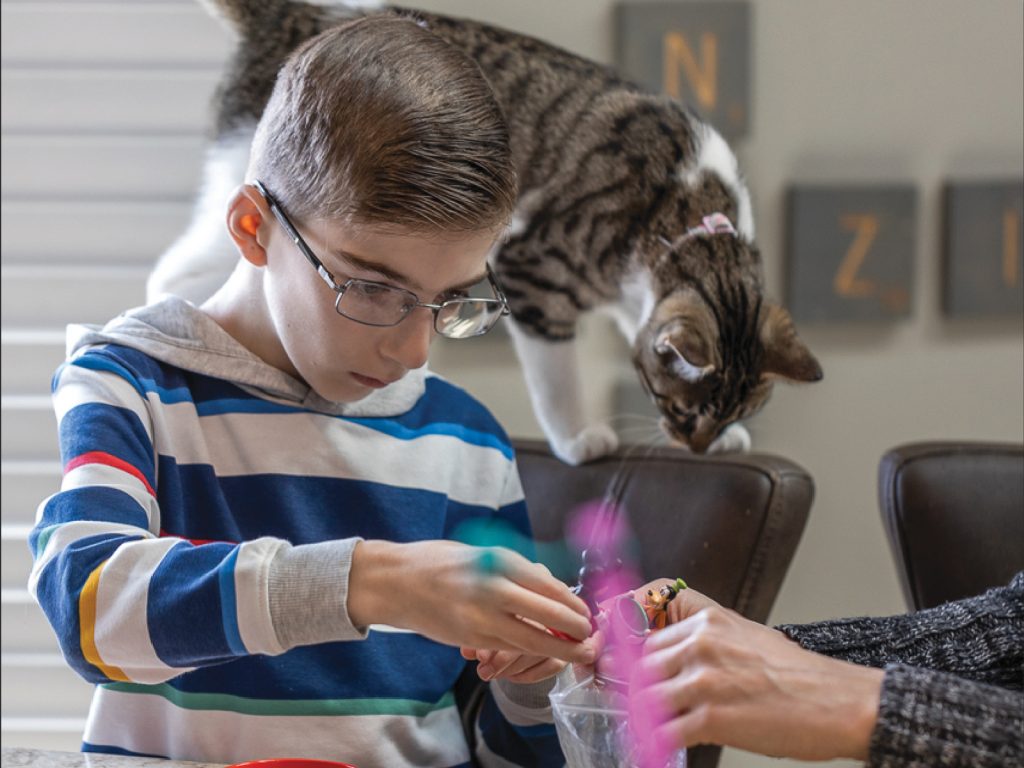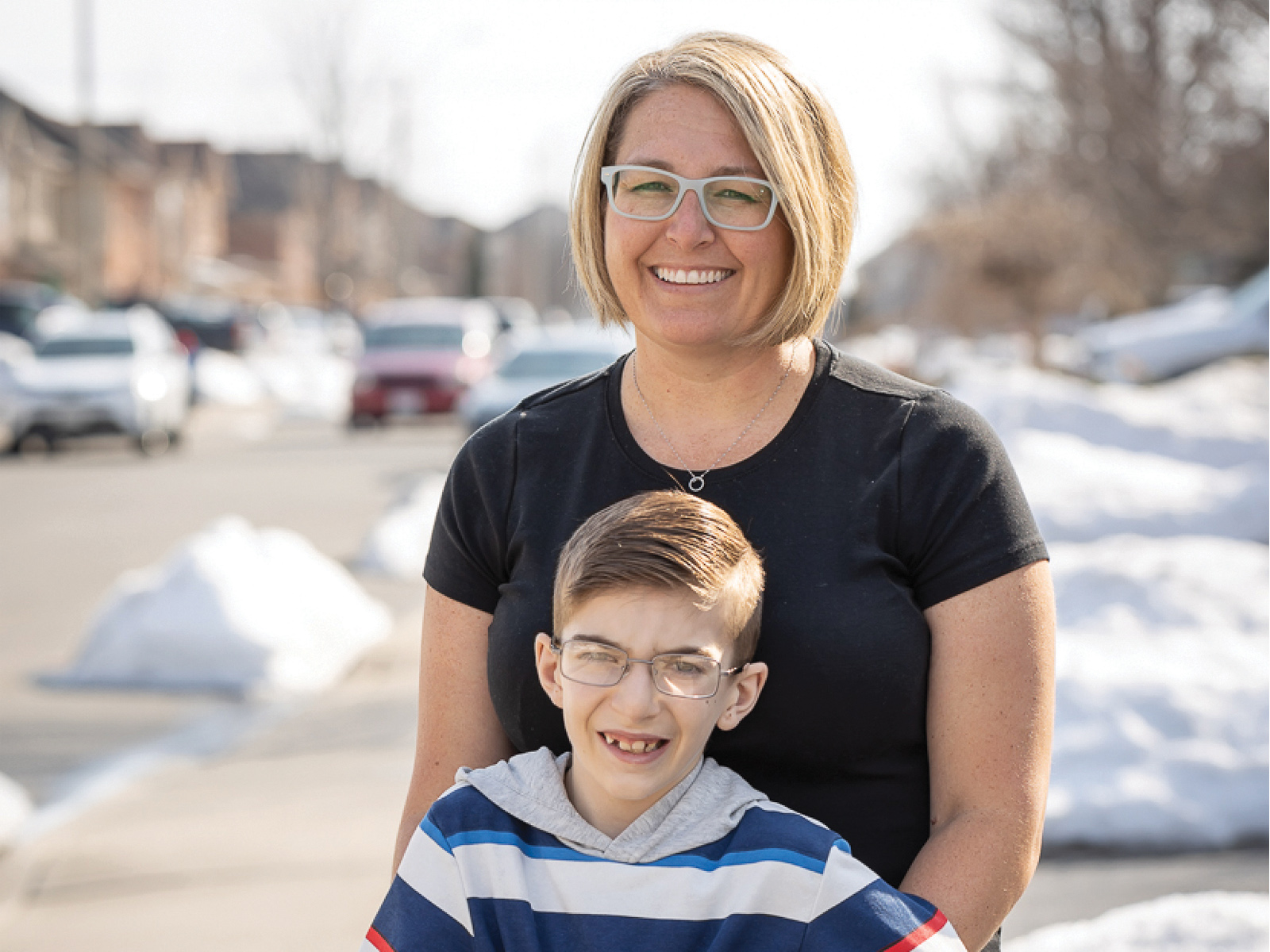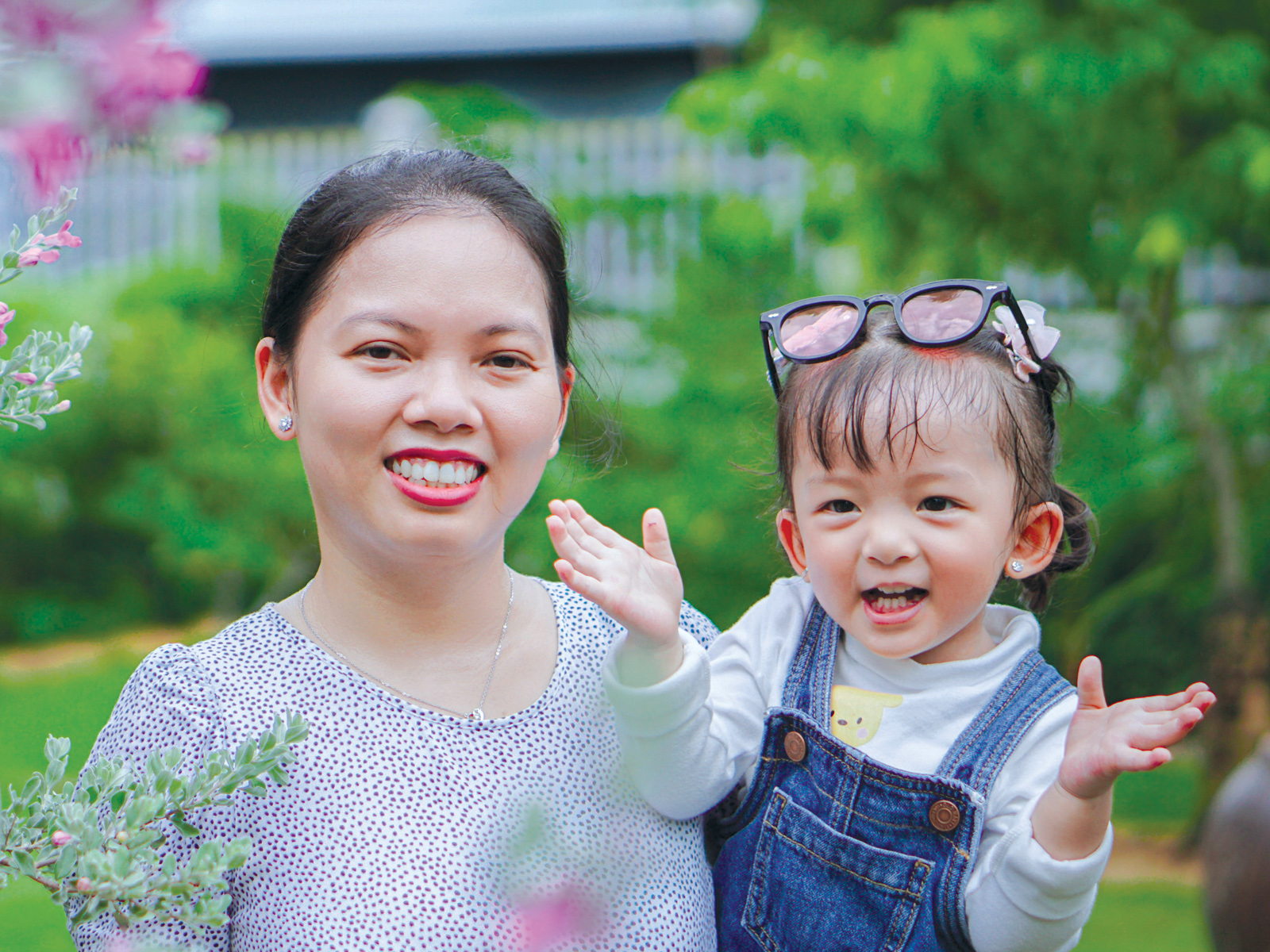…for Lochlin, a young patient with autism
By Kiley Lortie and Dr. Gillian Hogan
Nine-year-old Lochlin Baxter was diagnosed with autism spectrum disorder (ASD) shortly before his third birthday. Over the years, he developed a strong dislike to solid foods and struggled with healthy weight gain. But that has changed for the better thanks to support from the McMaster Children’s Hospital (MCH) Autism Program. The program is located at the Ron Joyce Children’s Health Centre (RJCHC), which is part of Hamilton Health Sciences, and is home to one of the largest growing hospital-affiliated autism programs in Ontario.
Services that run out of the autism program at RJCHC include a clinical team specializing in Applied Behaviour Analysis (ABA). This type of therapy focuses on building communication and daily living skills while reducing interfering or challenging behaviours. Therapy can be provided in the centre, at home, and in the community.
Lochlin’s ABA autism therapist, Kiley Lortie—along with his family and health-care team—worked together to build a plan that encourages healthy eating. “If it wasn’t for Kiley and the team, there’s no way Lochlin would be where he is today,” says his mom, Amanda Baxter, adding that he is now a healthy body weight for his age.
Finding healthy solutions
By age three, Lochlin’s feeding behaviour was becoming concerning, and following a case of stomach flu his aversion to solid foods worsened, requiring hospital admission and the insertion of a gastrostomy tube (G-tube). A G-tube is inserted through the wall of the abdomen directly into the stomach, providing liquid and food to people who are unable to meet their caloric needs with oral feeding.
Lochlin’s pediatrician, Dr. Gillian Hogan, has been working with the family and Lortie as a team to ensure that his nutritional goals are being met. “Children with ASD can be turned off by food based on its texture, consistency, colour, or smell,” says Hogan, “It can take time to sort out why a child is struggling. However, for children who are fed by G-tube, progressing to oral feeding is often a lengthy process.”

A taste of success
Lortie and the team were cautious when introducing new foods to Lochlin, making sure there were no problems with swallowing or choking. Family is a huge part of the care plan’s success, he suggests. “It’s great when everyone can come together and collaborate. It helps to create consistency and routine for the patient.”
The team started very gradually with Lochlin, says Lortie. “We began with skills such as taking a lick of yogurt off a spoon and slowly worked our way up to exposing him to larger amounts and different types of foods. Lochlin is such a fun, silly little guy and we were able to use that to find different ways of introducing food to make eating fun for him.”
A reward-based initiative was used to help motivate Lochlin to eat meals and use positive coping skills. “He loves things like trivia and guessing games, so we have him take a certain amount of bites or finish a portion to earn clues or google certain facts. It’s all about finding that middle ground and finding ways to keep him motivated.”
Lochlin is still extremely selective about the kinds of foods he was eating, but by following the plan his health-care team developed, he has progressed very well. He now eats meals with his family while using positive communication to express what foods he likes or dislikes. “Eating and using emotional coping skills are both hard things to work on, and he manages both very well,” says Lortie, who has joined Lochlin for some family meals.
Pushing past the limits
Lochlin’s health-care team and family are continuing to gradually increase his food intake orally while also boosting his independence and confidence. As Lochlin’s journey progresses, he has opened himself up to more options and choices. “Asking what he wants to eat, which spoon he would like to use, and things like this help give him a sense of control that helps to build empowerment,” says Lortie.
Hogan adds, “We should never put limits on where a child can go. Kids are resilient and Lochlin’s story is an example of pushing against those limits. I’m amazed at how far this young boy has come, and he’s grown so much since I’ve known him. It’s been a pleasure to work with Lochlin and his family.”
Lochlin, is pleased as well. “Kiley’s awesome,” he says, “I always get so excited every time she comes over and we get to do things together like build Lego.”
Kiley Lortie, Autism therapist at Hamilton Health Sciences’ Ron Joyce Children’s Health Centre. Dr. Gillian Hogan, developmental pediatrician at Hamilton Health Sciences’ McMaster Children’s Hospital.














